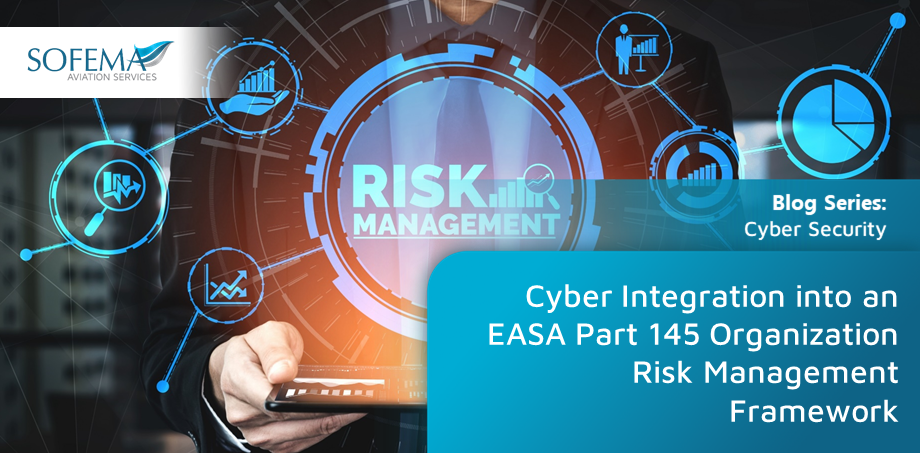Sofema Aviation Services (SAS) considers the challenges related to phishing, ransomware, data breaches, and insider threat exposures (both intentional and accidental) within the framework of an EASA Part 145 organization.
Challenges in Cybersecurity for Part 145 Organizations
EASA Part 145 organizations, as integral components of the aviation safety chain, face distinct challenges in managing information security. These challenges arise due to the complexity of the aviation ecosystem, evolving cyber threats, human-related vulnerabilities, and resource constraints.
- Modern aviation relies on increasingly interconnected systems that expand the attack surface and complicate threat detection.
- Continuous evolution in phishing techniques, ransomware, and insider threats demands agile cybersecurity measures.
- Employee errors and intentional actions account for a significant percentage of cyber incidents.
- Balancing cybersecurity investments with operational budgets remains a pressing issue.
Consider the following key areas:
- Interconnected Systems:
>> Increasingly interconnected aviation systems heighten the attack surface, complicating threat detection and mitigation.
Evolving Threats:
>> Rapid advancements in cyber-attack methods necessitate continuous updates to security measures.
- Human Factors:
>> Employee awareness and behavior remain significant vulnerabilities, with phishing and accidental data exposure being common issues.
Employ the Information Security Risk Assessment process outlined in EASA’s rules (e.g., IS.I.OR.205) to systematically identify, analyze, and mitigate threats.
>> Example: Categorize phishing and ransomware under “threats to operational integrity” and develop targeted controls
- Policies and Procedures
>> Develop and enforce Information Security Policies that address each cyber threat.
>> Example: An Acceptable Use Policy can specify employee guidelines to prevent phishing and insider-related risks.
- Incident Response and Recovery
>> Reference IS.I.OR.220, which mandates procedures for detecting, responding to, and recovering from information security incidents.
>> Example: Include ransomware recovery procedures (e.g., data restoration, notification protocols) in the ISMS.
- Continuous Monitoring and Improvement:
>> Schedule regular reviews of phishing simulation outcomes and employee training effectiveness.
- Regulatory and Compliance Alignment:
>> Ensure measures comply with EASA’s guidelines and other relevant regulations (e.g., GDPR for data breaches).
Best Practices for Enhancing Cybersecurity
- Security Awareness Campaigns:
>> Regularly remind employees about current threats and the organization’s defenses.
- Technology Investments:
>> Deploy advanced tools like behavioral analysis for insider threat detection and AI-driven threat intelligence.
- Cross-Functional Collaboration:
o Engage IT, HR, and operational teams in cybersecurity strategy development and implementation.
Third-Party Audits:
>> Conduct regular independent reviews of cybersecurity posture to identify and address gaps.
Regulatory Alignment:
>> EASA’s guidelines integrate international standards like ISO 27001, ensuring organizations adopt best practices while addressing aviation-specific requirements
>> Requirements for risk assessment, treatment, and continuous improvement are mandatory under ISMS.
Achieving Effective Cyber Integration within the Part 145 SMS System
To achieve effective cyber integration into an existing EASA Part 145 organization and develop a robust risk management framework, a practical analysis of risks across all organizational aspects is essential.
- Map out the IT infrastructure, maintenance systems (e.g., AMOS), and networks used in Part 145 operations.
- Highlight assets critical to aircraft maintenance, including software for component tracking and operational planning.
- Classify systems and data (e.g., technical manuals, maintenance logs, and communication systems) based on their potential impact on safety and business continuity.
- Simulate phishing attacks to test employee awareness.
- Identify vulnerabilities in system endpoints, file-sharing systems, and backup processes.
- Conduct a “ransomware readiness assessment” to measure response capability.
Conduct penetration tests on internal systems to evaluate resilience against unauthorized access.
- Analyze past incidents (if any) to identify trends and address recurring vulnerabilities.
- Assess access levels across personnel and identify high-risk roles (e.g., IT administrators).
- Establish a whistleblower system and conduct anonymous surveys to gauge employee morale.
Next Steps
- Follow this link to our Library to find & download related documents for Free.
- See the following 2 day course-Implementing an Information Cyber Security Program in an EASA Part 145 Organization – 2 Days
for comments or questions please email team@sassofia.com
Tags:
cybersecurity measures, IT infrastructure, Part 145 SMS System, Third-Party Audits, Technology Investments, Security Awareness Campaigns, EASA's guidelines, Information Security Risk Assessment, Evolving Threats, Interconnected Systems, aviation safety, managing information security, AMOS, BlogSeries, aviation ecosystem, GDPR, cyber threats, SAS blogs, Part 145 Organizations, Human Factors




